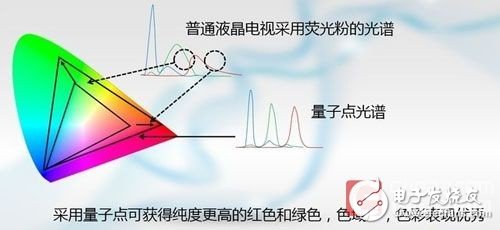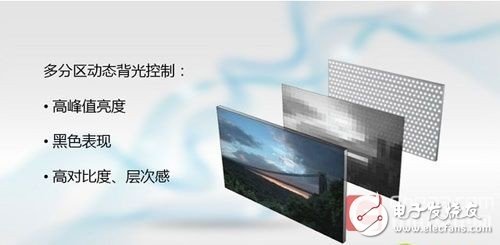I hope to explain the ULED technology with OLED.
The principle of backlight has always been the bottleneck restricting the improvement of LCD TV quality. Since the LCD panel itself does not emit light, the display of the image needs to rely on the illumination of the light, which makes the LCD TV display, contrast, and contrast in the black field compared to the self-illuminating display device. The fluency and color of motion pictures have been difficult to improve. Although the technology for improving the quality of LCD TVs is endless, most of them are adjusted from the aspects of image calculation, color adjustment and other software. It can be said that it is not a cure for the symptoms and it is difficult to break through the bottleneck of LCD TV itself.
However, in recent years, the technology to break through the barriers of LCD TVs has finally emerged. The ULED multi-zone dynamic backlight control technology achieves the contrast and picture fluency of the self-illumination technology through the flexible control of the backlight; the quantum dot technology replaces the traditional phosphor. The LED backlight source has greatly improved the purity and richness of color, breaking the limit of the color gamut coverage of LCD TVs.
Since 2013, the debate between OLED and liquid crystal technology has been fierce. Although the organic self-luminous OLED has certain advantages in the imaging principle, after several years of development, the problem of low OLED yield and short life has not been solved, and the investment cost is high, and OLED has not been promoted.

Compared to OLED TVs, ULCDs based on the liquid crystal principle provide a white field better than 4 times, 2 times contrast, while providing twice the brightness visible range and higher picture detail levels. In the high color gamut indicator, ULED TV uses nano-scale quantum dot technology, which is 10% higher than OLED.
The core of ULED technology is multi-zone dynamic backlight control, which has obvious advantages in terms of high peak brightness, black performance, contrast and layering. ULED TV divides the backlight into many independent controllable units. Through fine calculation and control, the backlight of each area is adjusted according to the brightness and level of the picture. The bright and transparent part enhances the brightness of the area, and the black The field and dark areas weaken or turn off the backlight of the section, allowing for high peak brightness, pure black performance, and higher contrast and layering.

As a relatively new topic in the TV industry this year, quantum dot technology has been used by many brands in its latest flagship product. The so-called quantum dot is actually a nano-scale particle that emits a single, pure light when illuminated by energy. While ordinary TVs rely on phosphors to emit light, the spectrum of the backlights overlap and mix, the color performance is not pure enough, and the colors are difficult to control. Quantum dot TV relies on nano-scale particles to emit light, with higher color purity and wider color gamut, which can display more rich colors.
984 controllers are available in four generic hardware classes: Large, rugged, high-performance chassis mount controllers Rugged, midrange-performance slot mount controllers, which reside in a primary housing beside 800 Series I/O modules Host-based controllers built on various industry-standard computer cards designed to reside in and execute control logic from a host computer Low-cost, easy-to-install compact controllers, for applications with less demanding environmental and performance requirements The family approach to 984 controller design allows you to make choices based on controller capacity (the number of discrete and analog/register points available for application programming, the number of I/O drops it supports), throughput (the rate at which it solves logic and updates I/O modules), and environmental hardness (the design standards its hardware implementation must meet).
A major advantage of the family approach to 984 controller design is product compatibility. Regardless of its computational capacity, performance characteristics, or hardware implementation, each 984 controller is architecturally consistent with other 984s. The 984 instruction set (the functional capabilities of the controller, part of the system firmware stored in executive PROM) comprises logic functions common to other 984s. This means that user logic created on a midrange or high-performance unit such as a 984-685 or a 984B can be relocated to a smaller controller such as a 984-145 (assuming sufficient memory in the smaller machine) and that logic created on a smaller controller is upwardly compatible to a larger unit. As your application requirements increase, it is relatively easy to upgrade your controller hardware without having to rewrite control logic. Also, training costs and learning curves can be reduced, since users familiar with one 984 model automatically have a strong understanding of others.
Modicon PC0984 Programmable Controller
Modicon PC 0984 Programmable Controller,Communication Processor,Processor Module,CPU Module
Xiamen The Anaswers Trade Co,.LTD , https://www.answersplc.com
